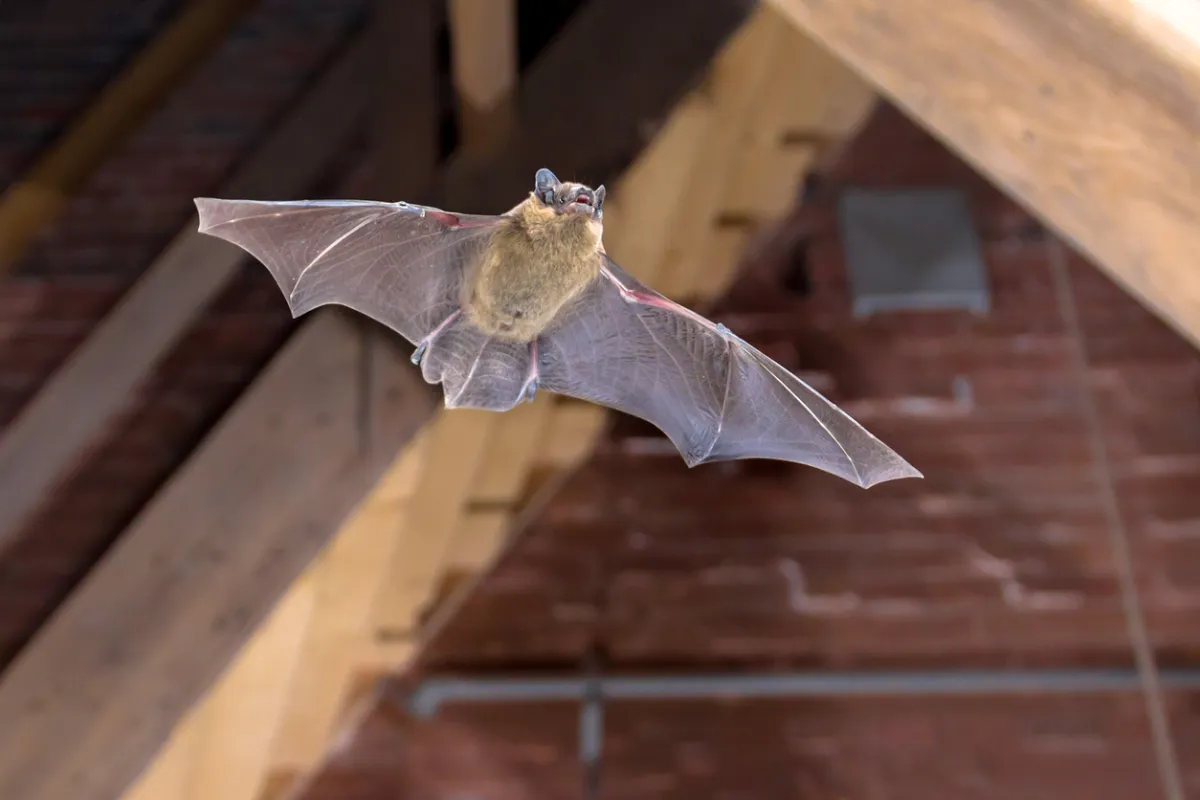Bats are fascinating creatures that play important roles in the ecosystem. While they are typically found in natural habitats like caves and trees, it is not uncommon for a bat to find its way into a house. Understanding why bat enters the house can help us deal with these unexpected visitors more effectively.
One reason bats enter House is the search for warmth and shelter. During colder months, bats may seek refuge in attics, chimneys, or other warm spaces. They are drawn to the warmth and protection that houses provide. Additionally, bats may enter homes in search of food. If your house has a significant insect population, bats might be attracted to it as a potential food source.
Another reason bats enter homes is the availability of suitable roosting sites. Bats prefer dark, secluded areas where they can rest undisturbed during the day. Attics, wall voids, and unused chimneys can provide ideal roosting spots for bats.
It’s important to note that “bats do not intentionally enter homes” to cause harm or create a nuisance. They are simply following their natural instincts and seeking the best possible conditions for survival.
Understanding the Bat’s Behavior
Before diving into the specifics of dealing with a bat in your home, it’s useful to understand a bit about these creatures. Bats are the only mammals capable of sustained flight, and they are incredibly beneficial to ecosystems. They play a crucial role in insect control, pollination, and seed dispersal.
However, their presence in human dwellings is generally uninvited. Bats may enter homes by accident, usually through open windows, chimneys, or gaps in the building’s exterior. Their primary motivation is not to invade your space but often to seek shelter or find food.
Does It Bring Bad Luck If A Bat Enters Into A House?
Bats have long been associated with various superstitions and myths. Contrary to popular belief, bats are not omens of death or bringers of bad luck. These misconceptions have led to fear and misunderstandings about these beneficial creatures.
In many cultures, bats are seen as symbols of good luck, fertility, and even protection against evil spirits. In Chinese folklore, bats are regarded as symbols of happiness and prosperity. They are often depicted in artwork and decorations during festive occasions.
While it’s understandable to feel uneasy when a bat enters the house unexpectedly, it’s important to remember that they are harmless and can be safely removed. By dispelling these myths and understanding the true nature of bats, we can appreciate and coexist with them more peacefully.
Also Read| Unlucky Mole On Female Body
Bat Flying Around Your House? First Things First
If a bat enters your home, it’s crucial to remain calm and take immediate action to ensure the safety of both yourself and the bat. Here are the steps you should follow:
1. Stay Calm
If a bat flies into your house, the first step is to stay calm. Bats are usually more scared of you than you are of them. Panicking can lead to rash actions that might make the situation worse.
2. Isolate the Bat
Close off the room where the bat is located by shutting doors and windows. This will help confine the bat to a smaller area, making it easier to handle. If the bat is in a room with an exterior window, open the window to give the bat a chance to exit on its own.
3. Avoid Direct Contact
Do not attempt to handle the bat with your bare hands. Use gloves and other protective gear if you must intervene. It’s important to avoid direct contact to minimize the risk of bites and scratches, which can transmit diseases.
4. Guide the Bat Out
If the bat does not leave on its own, you can try to guide it out. Use a soft object like a broom to gently encourage the bat towards the open window or door. Be gentle and avoid making sudden movements that might stress the bat further.
How to Keep Bats Out of Your House?
Preventing bats from entering your house is the best approach to avoid future encounters. Here are some preventive measures you can take.
- Seal entry points: Inspect your house for any gaps or openings that bats could use as entry points. Seal cracks in walls, repair damaged screens, and install chimney caps to prevent bats from gaining access.
- Install bat houses: Provide alternative roosting sites for bats by installing bat houses in your yard. These specially designed structures mimic natural roosting spots and can attract bats away from your house.
- Reduce insect populations: Bats are attracted to areas with abundant insect populations. Minimize attractants by keeping your yard free of standing water, maintaining proper garbage disposal, and using insect repellents when necessary.
- Trim trees and vegetation: Bats can use overhanging branches and dense vegetation as pathways to your house. Trim trees and shrubs near your house to eliminate these potential access points.
By implementing these preventive measures, you can create a bat-friendly environment while keeping them out of your living spaces.
